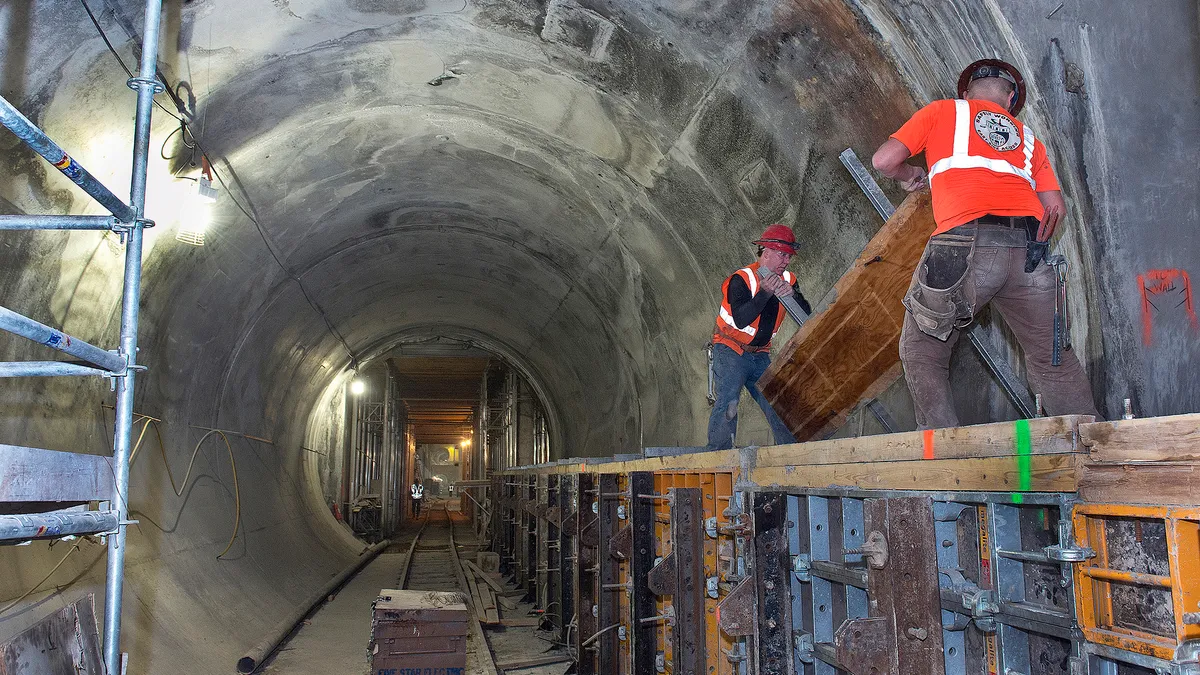Dive Brief:
- New York City's Metropolitan Transportation Authority (MTA) has spent billions in overstaffing and inflated construction costs for its massive subway system, according to The New York Times, leaving the agency unable to meet the system's maintenance needs.
- Driving up costs, according to The Times, are trade union deals that have resulted in the MTA paying for up to four times the necessary workers; politically connected construction companies increasing projected costs by 50% when bidding on subway work; consultant firms — staffed by former MTA employees — possibly performing a higher-than-average amount of design and management services; and inaction on the part of public officials charged with controlling costs.
- As an example of out-of-control spending, projected costs for the MTA's 3.5-mile East Side Access tunnel, which will connect the Long Island Railroad to Grand central terminal, are $12 billion — $3.5 billion per mile and seven times the global average. In addition, one union has negotiated a base wage and benefit rate of $111 per hour for tunnel workers, a figure that rises as high as $400 per hour when calculating overtime and weekend work.
Dive Insight:
In 2015, Michael Horodniceanu, the MTA’s chief engineer and head of capital projects, told The Seattle Times that the East Side Access tunnel was on track to cost $1 million per mile, but that was when total maximum costs were projected to be $10.2 billion, twice the original estimate. He also said that some of the cost overruns were because the labor force was paid well.
The subway has been a constant problem as far as maintenance goes, and New York Gov. Andrew Cuomo suggested earlier this year that the city adopt congestion pricing as a way to pay for it. Commuters traveling in and out of the most traffic-heavy parts of Manhattan would pay an additional fee under such a plan, but New York City Mayor Bill de Blasio came out against it, citing the difficulty of establishing a fair model.
But congestion pricing has its fans. According to the Federal Highway Administration, congestion pricing can reduce traffic backups and give motorists the added benefit of being able to better project their travel time. A congestion pricing plan can also include discounts. According to the FHA, Lee County, FL, offers 50% off the price of tolls to drivers traveling during off-peak hours. The plan helped to reduce traffic during peak travel times by up to 20%.












